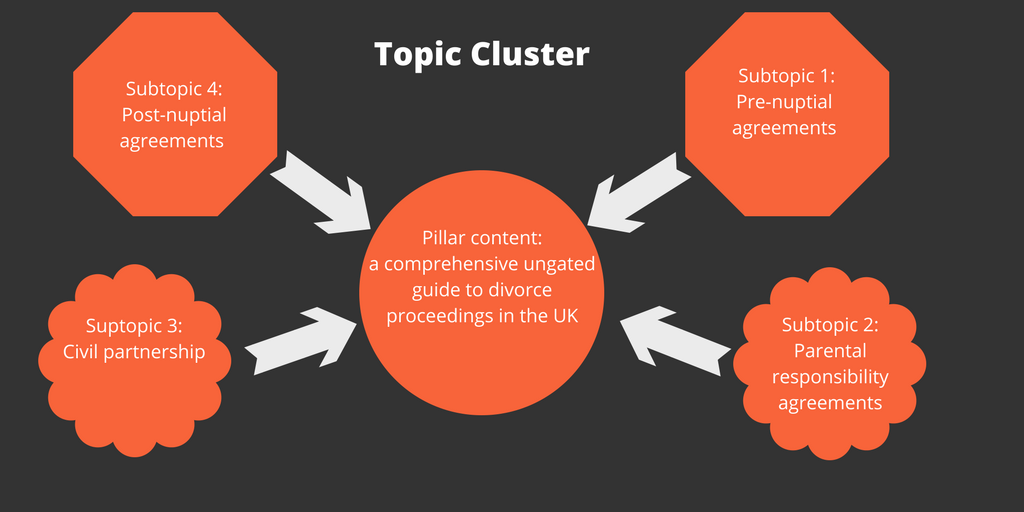Search queries are getting longer and more conversational, which means that if you are still relying on keywords alone, it's time for a change.
I personally understand concepts better when there are active examples, so I've decided to interpret the below article by Hubspot using a specific situation.
Keywords 2.0
Keywords are still important but you also need to be thinking about queries that match the intent.
"Importance has shifted from the exact words you use, to the overall authority you hold on a specific topic and all the related keywords and long tail keywords associated with it." -Jennifer Hall, Lead Forensics
So for instance if you are a family lawyer wanting to secure as a client a spouse researching divorce options, 'divorce lawyer' isn't enough. Instead you want to think in terms of topics you want to be talking about and be known for. So you might want to cater for some of these topic queries:
- What is the wife/husband/spouse/partner entitled to in a divorce?
- What are separation legalities?
- What is the process for a divorce?
- Custody battles, who gets the children?
- Annulment options
- no-fault divorces in the UK
- Splitting up from civil partner
- How do you divide assets
- Pre-nups in the UK
- Cohabitation after a divorce
- civil partnership dissolution
- Who gets the dog in the divorce
Etc
Tip: If you're stuck for ideas, play around Answer the Public.
Pillar Content and Subtopics
You can create content based on each of these specific queries, but the key is that they all point to and revolve around what Hubspot calls Pillar Content. It is a an overview page that should use as many of the synonyms of your expertise. Think of it as the 'About' or 'pinned post' for the content cluster!
So for instance if your Pillar Content is a Guide to Divorce Proceedings in the UK, you're going to want to name drop terms like 'separation', 'custody', 'division of assets', and so forth within it.
Around this Pillar Content you should create subtopic content which is a) more niche and in-depth and b) links back to your Pillar Content. It makes it clear that it all belongs together and helps build site authority.
Subtopic content can take all sorts of forms, videos, blogs, and so forth.
So in a very general rough sense, your cluster could look something like this:

You can have as many of these clusters as are relevant to your business.
How do I do this in practicality?
If you are using your blog already as a way to focus on your niche expertise, then you are on the right track. What you want to do now is take a step back and see:
- If there are any relevant topic queries you're not talking about
- Whether you could build up a core piece of content that could function as your Pillar Content (this could be created out of several existing pieces, to save you time)
- Add a link to your Pillar Content in all the related content (blog posts, videos, slideshares, etc)





/Passle/53d0c8edb00e7e0540c9b34b/MediaLibrary/Images/2025-06-24-15-50-59-531-685ac963d81bf11b7522dd8e.png)
/Passle/53d0c8edb00e7e0540c9b34b/MediaLibrary/Images/2025-12-18-10-52-26-493-6943dceac311190ddba15d64.jpg)
/Passle/53d0c8edb00e7e0540c9b34b/MediaLibrary/Images/2025-12-16-15-16-25-843-694177c9190f803408651724.jpg)
/Passle/53d0c8edb00e7e0540c9b34b/MediaLibrary/Images/2025-12-09-11-05-31-284-6938027b1b6076d9d8980f1e.png)
/Passle/53d0c8edb00e7e0540c9b34b/MediaLibrary/Images/2025-12-04-20-27-35-105-6931eeb7f170698845c6b19b.jpg)



